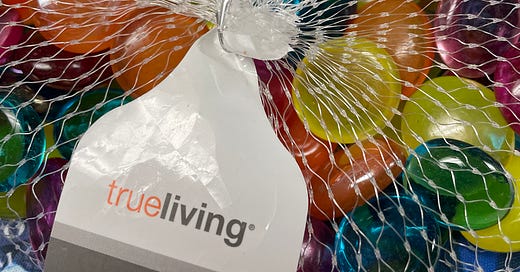You may not have disposable income or access to game stores for minis or terrain and that’s ok. If all you have is bag of multi colored glass beads, you can run a game of dnd.
In reality, you don’t even need that, you can play theatre of the mind. But, if you love playing in person and love having a map on the table your players can focus on (Runehammer calls it the campfire), then these beads can offer you dynamic encounters and player/character interactions at your table.
Here are 20 ways you can use just a bag of glass beads.
Combat & Encounters
1. Health Beads: Different colors represent enemy health states (red=low, green=high). Draw beads or toss them in a bowl for dramatic reveals.
2. Initiative Tracker: Bead chain with unique beads for each player and monster. Visually engaging and tactile tracking.
3. Loot & Treasure: Fill pouches or chests with colored beads representing different rarities (gold=legendary, silver=rare, etc.). Let players draw for random loot.
4. Status Effects: Assign colors to conditions (poisoned, charmed, etc.). Attach beads to character minis for visual representation.
5. Mysterious Urns: Bead mixtures within urns hold cryptic clues or prophecies. Players interpret colors based on pre-established meanings.
6. Wandering Monsters: Each bead color represents a different encounter type (goblin ambush, trap, friendly NPC). Draw a bead to determine what the party faces.
Puzzles & Traps
7. Color-Coded Buttons: Buttons on a puzzle require specific bead arrangements to activate. Players must decipher a pattern or solve riddles for clues.
8. Shifting Maze: Beads on a grid represent tiles that switch colors/positions when triggered. Players navigate the changing maze to reach the exit.
9. Weighted Scales: Place beads on scales to balance them, unlocking doors or revealing secrets. Colors can represent different weights or values.
10. Magic Portals: Different bead configurations activate portals to various destinations. Players experiment with combinations to discover where they lead.
11. Mimic Detection: Scatter beads around a suspicious object. If the object is a mimic, the beads move or change color when players approach.
Exploration & Storytelling
12. Fortune Telling: Create a system where bead combinations predict the future or answer questions. Players draw beads and interpret the results.
13. Ancient Language: Invent a bead-based language for lost civilizations or cryptic messages. Players decipher meanings based on colors, patterns, or positions.
14. Star Charts & Constellations: String beads to form constellations that guide players through the wilderness or unlock hidden secrets.
15. Offerings & Shrines: Players leave specific bead combinations as offerings to appease deities or gain blessings. Different colors hold different meanings.
16. Crafting & Alchemy: Beads as crafting materials. Combine colors to create potions, magical items, or unique effects.
Miscellaneous
17. Voting System: Players vote on decisions by placing beads in colored jars. Secret and anonymous voting adds to the intrigue.
18. Time Tracking: Bead hourglass for in-game timekeeping. Different colors represent days, hours, or minutes.
19. XP & Currency: Use beads as a tangible representation of experience points or gold coins. Visually rewarding for players.
20. Custom Miniatures: String beads together to create unique and colorful miniatures for NPCs, monsters, or even the players themselves.
Bonus Tip: Combine these ideas! Beads can be used in various ways across your campaign, adding a tactile and engaging element to your D&D sessions.
If you want to see me use these beads, watch here
Head to the dollar store to grab some beads or grab a bunch here or here





This is a great use for DM's and for players especially when TCO (Total Cost of Ownership, ie, buy more stuff) is viewed to currently attempt to reduce costs in todays market.
I have in the past used Backgammon chips, Chess peices and even Coke tops!
Great article and appreciate the 20 suggestions you have here.